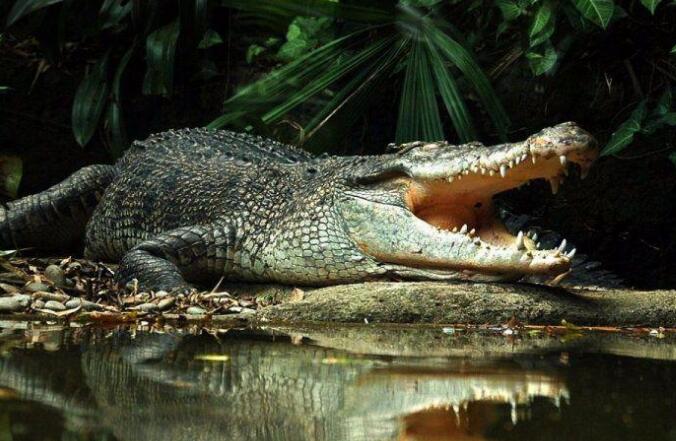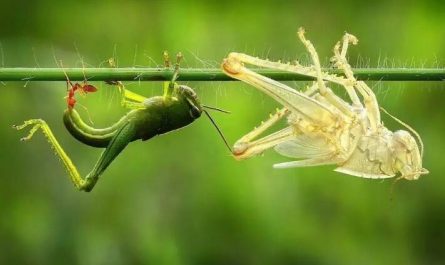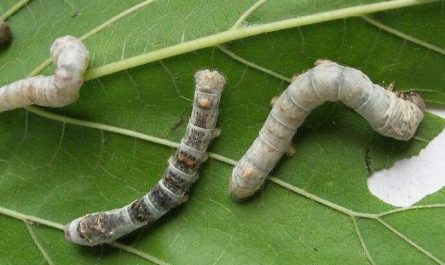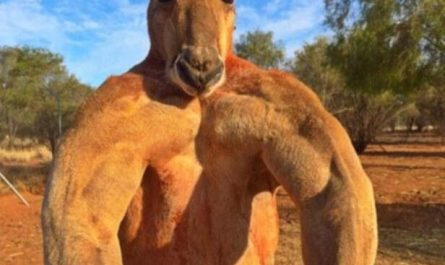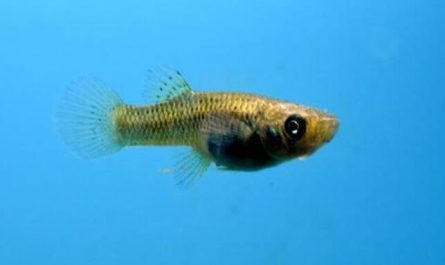The reason why crocodile is not a fish
Crocodiles are not fish, but reptiles.
Crocodile is a cold-blooded oviparous animal. Crocodiles are extremely precious animals. The name of the crocodile, or because it plays in the water like a fish, hence the name “crocodile”.
The crocodile is one of the earliest and most primitive animals found alive so far. Appeared in the Mesozoic from Triassic to Cretaceous (about 200 million years ago), fierce spine reptiles, and dinosaurs are contemporaries, and are carnivorous animals. There are 23 species of crocodiles recognized. Crocodiles are wild animals with extremely high ecological, scientific and economic value. Therefore, some countries in the world are actively developing crocodile breeding.
The reason why crocodiles have attracted special attention is because of their status in evolutionary history: crocodiles are the last link between existing creatures and dinosaur-like reptiles in prehistoric times; at the same time, a large number of various crocodile fossils have been discovered; 4 sub Three of them are extinct. Based on these extensive fossil records, it is possible to establish a clear relationship between crocodiles and other vertebrates.
Crocodiles are spine amphibians and reptiles. Most of their temperaments are ferocious and violent. They like small animals such as fish and frogs, and even eat and kill humans and animals. According to records, there are more than 20 species of crocodiles in the world, my country’s alligator, Thailand The crocodile and crocodile are more famous species. The largest crocodile breeding base in my country is the Panyu Farm in Guangzhou City. The farm covers an area of nearly 70 hectares and has crocodile, crocodile, Chinese alligator, and South American alligator. There are nearly 100,000 crocodiles including alligators.
Except for a few crocodiles living in temperate regions, most of them live in rivers, lakes and watery swamps in tropical and subtropical regions, and some live in shallows near the coast. It has a long face and a long mouth. There is a saying that “the king of the world is nothing like a crocodile”. Crocodiles are of great ornamental value. Crocodile also has a variety of medicinal and health benefits. Crocodile is also a valuable edible delicacy. Because of its treasures, some countries in the world are actively developing crocodile breeding.
Crocodiles are a species of Crocodylus family. Also known as crocodile or sea crocodile. Distributed along the coast of Southeast Asia to northern Australia. With a total length of 6-7 meters and a maximum length of 10 meters, it is the largest reptile in existence. The crocodile lives in the bay or crosses the sea. They nest on the tree-lined hills by the Danshui River (above 60,000 meters from the sea). They use their tails to sweep out a platform of 7-8 meters. On the platform is a nest for crocodile eggs with a true diameter of 3 meters. The nest is away from the river. It is about 4 meters long and is made of leaves. Each nest has about 50 white hard-shelled eggs, about 80×55 mm in size. The female crocodile waits on the side of the nest, and keeps the nest at 30~33℃. ~90 days to incubate; the young crocodile is 240 mm long from the shell, can grow to 480 mm in 1 year, 1156 mm in 3 years, and weighs 5.2 kg.
Crocodiles are fierce and rebellious. Adult crocodiles are often underwater, with only their eyes and nose out of the water. They have sharp eyes and ears, and immediately sink when frightened. In the afternoon, there are more floating water and sun, and the eyes are bright at night. The young crocodile is red. Crocodiles mate in May to June for several hours, while fertilization only takes 1 to 2 minutes; they lay eggs in July to August. The male crocodile occupies the domain, and the male crocodile fights the intruders. He often eats fish, frogs, shrimps, crabs, but also alligators, turtles, and turtles. It has a strong chewing ability and can shatter hard armor.
It was first known in the Han Dynasty of China that there were crocodiles in the south, and it was recorded repeatedly in the Tang and Song Dynasties. As the saying goes, “crocodile tears”, in fact, it is true. The crocodile really shed tears, but it is not because it is sad, but because it excretes excess salt in the body. . The excretion function of the crocodile kidney is very imperfect. The excess salt in the body is excreted by a special salt gland. The crocodile’s salt glands are located just near the eyes. In addition to crocodiles, turtles, sea snakes, sea lizards and some seabirds also have similar salt glands. Salt glands enable these animals to remove excess salt from seawater and obtain fresh water. Therefore, the salt gland is their natural “desalinizer”.
Life habits of crocodile
Crocodiles mainly feed on fish, waterfowl, hares, deer, frogs, etc., and are carnivorous animals. It is generally believed that the crocodile is an aquatic animal, but this aggressive creature may have some secret skills.
The latest research found that climbing is a common behavior of crocodiles. They climb to get a better hunting position, or get the largest possible area of sunlight. Britton, a researcher at Charles Darwin University, said that he had witnessed a 1.5-meter-long freshwater crocodile climbing a steep river bank and attempting to climb a 1.8-meter-high fence. “Crocodiles not only lie on the shore to bask in the sun, they sometimes walk around. Crocodiles are actually very sensitive animals, and their sensitivity is beyond human imagination.” And saltwater crocodiles are more dangerous than their close relatives, freshwater crocodiles.
Modern crocodiles and birds have similar breathing methods and auxiliary respiratory systems. It is possible that primitive dragons in the Triassic have evolved this respiratory system, and most offspring have similar respiratory systems, such as: dinosaurs, Pterosaurs, crocodile-shaped super-eyes…Researchers also speculate that the special breathing methods of the main dragons are also one of the reasons why they gradually dominate in the process of competition with mammals-like reptiles. During the Triassic period, the oxygen content in the atmosphere was low, and the special breathing method of the main dragons made it more efficient and competitive. In a 2010 study, it was found that American alligators have a unique way of breathing. This study found that when the American alligator inhales, the inhaled air enters the second bronchus, flows through the third bronchus that exchanges gas, and finally enters the first bronchus. When the American alligator exhales, the air will pass through the second bronchus, the third bronchus, the first bronchus, and finally out of the body from the trachea. Modern birds also have a similar breathing method. During the breathing process, air circulates in the air sacs in a one-way manner; while the breathing method of mammals is repeated directional air circulation, and air exchanges in the alveoli. In addition to modern birds, many dinosaurs have also been found to have air sacs, which can increase their breathing efficiency.
Crocodile Tears
Crocodiles really shed tears, but that’s not because they are sad. It has long been thought that crocodiles are excreting excess salt in their bodies. Some marine reptiles such as sea turtles, sea snakes, sea lizards and some seabirds have salt glands growing near their eye sockets. Salt glands enable these animals to remove excess salt from seawater and obtain fresh water. Therefore, the salt gland is their natural “desalinizer”. So people think that crocodile tears are also the reason. The excretion function of the crocodile kidney is very imperfect. The excess salt in the body is excreted by a special salt gland. The crocodile’s salt glands are located just near the eyes.
But this is just a guess. It was only in 1970 that biologists tested the composition of crocodile tears and found that the salt content of the crocodile’s tears increased after living in sea water for a period of time. This seems to prove that the crocodile’s eye sockets have the same salt glands as sea turtles, so it was written into zoology monographs and textbooks. But on the other hand, this experiment shows that the salt content of crocodile tears is significantly lower than the salt content of salt gland secretions of marine reptiles such as turtles and sea snakes, indicating that the metabolic function of crocodile is far more perfect than other animals, so there are biological Scientists (including those who did this experiment) believe that the hypothesis that there are salt glands in the crocodile’s eye socket cannot be denied.
This controversy ended in 1981. That year, Laurence E. Taplin and Gordon C. Grigg of the University of Sydney in Australia noticed that a clear liquid would flow from the tongue of the crocodile. They suspected that this was crocodile salt. Glandular secretions. But the rate of fluid secretion is too slow to be collected for analysis. They injected salt water to stimulate the secretion of the salt glands, but they were unsuccessful. In the end, the method they adopted was to inject methacholine into crocodiles. Previous experiments have shown that injecting methacholine into other marine reptiles can stimulate the secretion of salt glands. The crocodile’s tongue really kept secreting fluid, which can be collected with a syringe to analyze the content of sodium, chloride, and potassium ions and determine the osmotic pressure. They also collected crocodile tears for comparison. It was found that the salt content of these secretions is much higher than the blood salt concentration, about 3-6 times, and the osmotic pressure is 3.5 times that of blood, which is equivalent to the osmotic pressure of seawater. Although the salt content of tears has also increased, it is only about twice the blood salt concentration. Later, they dissected the crocodile tongue and found salt glands on the tongue mucosa. The structure is similar to that of other marine reptiles, especially the salt glands under the tongue of sea snakes. Since then, other people’s studies have also confirmed this finding.
It seems that alligators excrete salt through the secretion of the tongue instead of tears. So, what role do crocodile’s tears play? Crocodiles usually start to secrete tears after they have been on land for a long time. They are secreted from behind the nictitating membrane. The nictitating membrane is a transparent eyelid. When the crocodile dives into the water, closing the nictitating membrane can not only see the underwater situation, but also protect the eyes. Another function of nictitating membrane is to moisturize the eyes, which requires tears to lubricate.
Does the crocodile really shed tears when they eat? Kent Vliet, a zoologist at the University of Florida, observed and photographed 4 caiman and 3 alligators eating on land in a crocodile farm in 2007, and found that 5 of them would indeed cry while eating, and some even The eyes will foam. They eat processed foods like dog food, and of course they can’t cry for these foods. Fleet speculates that this is because the crocodile blows air when eating, and the air and tears in the sinuses are mixed and flowed out.
